1. Product
1.1. Product: Solutions Management
1.1.1. Internal Solutions Management Portal aka "Walled Garden"
1.1.1.1. Store for re-use
1.1.1.2. Deconstruct for re-mixing
1.1.1.3. Choose to publish to the public portal
1.1.2. Branded Solutions Management Storefront
1.1.2.1. Manage public challenges
1.1.2.2. Publish solutions in branded platform
1.1.2.3. Publish to public portal
1.1.3. Product: Public Portal
1.2. Product Development
1.2.1. "Prime the pump"
1.2.1.1. Taxonomy
1.2.1.1.1. Identify repositories of data
1.2.1.1.2. IBM to analyze the data in those repositories
1.2.1.1.3. Map analysis to topics?
1.2.1.2. Solutions
1.2.1.2.1. Definition
1.2.1.2.2. AI input
1.2.1.2.3. Manual input
1.2.1.3. Building blocks
1.2.1.3.1. Can building blocks be created by AI?
1.2.1.3.2. Can building blocks be created by "the crowd"?
1.2.1.3.3. What is the incentive to create building blocks?
1.2.1.3.4. Doe we need extrinsic incentives for building block creation?
1.2.1.3.5. What is the relationship between building blocks and the taxonomy?
1.2.2. The First MVP
1.2.2.1. Customers
1.2.2.1.1. EcoTrust
1.2.2.1.2. Blue Solutions
1.2.2.1.3. Oxfam
1.2.2.1.4. Mercy Corps
1.2.2.1.5. Smaller "Solutions Management" or "Walled Garden users"
1.2.2.2. User Stories
1.2.2.2.1. Solutions management
1.2.2.2.2. Challenge Management
1.2.2.2.3. Solutions re-mixing
1.2.2.2.4. Public Portal
1.3. Incentives and Currencies
1.3.1. Time Banking
1.3.1.1. Foundations provide $time as part of grants
1.3.1.2. Earn $time
1.3.1.2.1. Input solutions
1.3.1.2.2. Create Building blocks
1.3.1.2.3. Curate content
1.3.1.2.4. Comment / Feedback - Expertise
1.3.1.3. Spend $time
1.3.1.3.1. Learn about solutions and Building Blocks from creators and re-users
1.3.1.3.2. Get formal consulting
1.3.1.3.3. buy RP services
1.3.2. RFP Platform
1.3.2.1. Publish RFP in context of
1.3.2.1.1. Problems
1.3.2.1.2. Solutions
1.3.2.1.3. Building blocks
1.3.2.2. Take applications that input / re-mix
1.3.2.2.1. Solutions
1.3.2.2.2. Building blocks
1.3.3. Grant requirements to "publish" solutions
1.3.4. Grant requirements to
1.4. Services
1.4.1. Training / Events
1.4.1.1. Slam
1.4.1.2. Workshop
1.4.2. Challenge Management
1.4.2.1. Internal
1.4.2.2. Multi-org / Community
1.4.2.3. Public
2. Ecosystem
2.1. Orgs defined by co-creation
2.1.1. Wikipedia
2.1.2. Minecraft
2.1.3. MeetUp
2.2. Similar Efforts
2.2.1. Idealist Team
2.2.2. Imperative
2.2.3. Skibb
2.2.4. Solvermine
2.2.5. Goodnet
2.2.6. List of problem solving platforms
2.2.7. Wikipedia Crowdsourcing projects
2.2.8. Social Citizens / Case Foundation
2.2.9. Other
2.2.9.1. http://www.solvish.com/
2.2.9.2. http://koios.org/
2.3. Articles etc
2.3.1. HBR: Community Powered Problem Solving
2.3.2. Deloitte: Next Generation of Problem Solving
2.4. Other interesting Orgs
2.4.1. FSG
2.4.1.1. Collective Impact
2.4.1.1.1. Common Agenda: All participants have a shared vision for change including a common understanding of the problem and a joint approach to solving it through agreed upon actions
2.4.1.1.2. Shared Measurement: Collecting data and measuring results consistently across all participants ensures efforts remain aligned and participants hold each other accountable
2.4.1.1.3. Mutually Reinforcing Activities: Participant activities must be differentiated while still being coordinated through a mutually reinforcing plan of action
2.4.1.1.4. Continuous Communication: Consistent and open communication is needed across the many players to build trust, assure mutual objectives, and appreciate common motivation
2.4.1.1.5. Backbone Organization: Creating and managing collective impact requires a separate organization(s) with staff and a specific set of skills to serve as the backbone for the entire initiative and coordinate participating organizations and agencies
2.4.1.2. Shared Value
2.4.2. Creative Commons
2.4.3. LinkedIn
2.4.4. IDEO Amplify
2.4.5. Guidestar
2.4.6. Fluxx
2.4.7. Neighborworks Success Measures
2.4.8. Corporates
2.4.8.1. Google.org
2.4.8.2. Cisco
2.4.8.3. eBay
3. Customers
3.1. Behavior Change
3.1.1. Store publicly
3.1.2. Re-Use
3.1.3. Deconstruct
3.1.4. Re-Mix
3.2. Customer Pain
3.2.1. Internal Solutions Management
3.2.2. Improvement of solutions through "peer review" or "external confirmation" like behavior
3.2.3. re-use of solutions by others
3.2.4. PR from External publication of solutions
3.3. Descriptions
3.3.1. Customer 1: Large and/or established orgs with many existing solutions and a pain point around managing those solutions
3.3.1.1. Willing to invest in "platform"
3.3.1.1.1. Blue Solutions
3.3.1.1.2. Oxfam
3.3.1.1.3. Mercy Corps
3.3.1.2. User willing to buy a basic "solutions management" product
3.3.1.2.1. Grameen Foundation
3.3.1.2.2. Island Institute
3.3.2. Customer 2: Small(er) less established orgs needing to draw on external resources to adopt successful solutions
3.3.2.1. Likely free users of "Public Portal"
3.3.3. Customer 3: Primarily characterized as a data repository. Generally an intermediary like Guidestar, the foundation center, ...
3.3.4. Customer 4: Foundations who do not behave like customer 1 but are valuable as data repositories or channel partners / lead gen
3.3.4.1. Rockefeller Foundation

